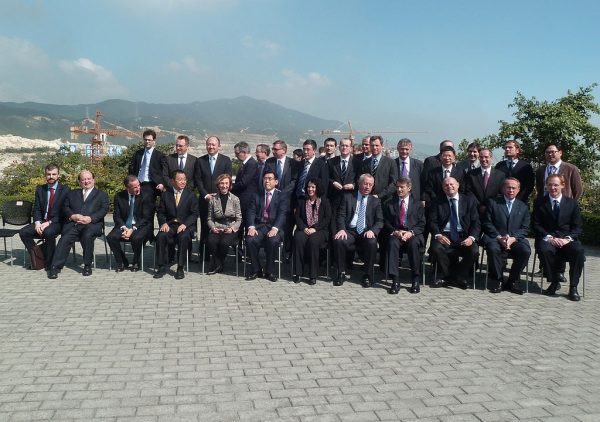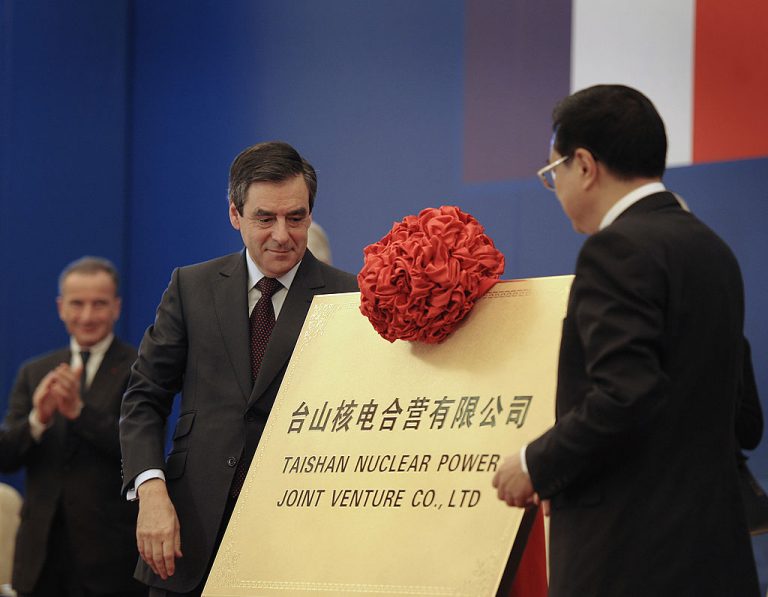A pair of the world’s largest nuclear reactors, a French-Chinese joint venture located in Guangdong Province, approximately 85 miles away from Hong Kong, is leaking fission gasses according to reports emerging June 14. However, it appears the French side of the operation warned the U.S. government about the emerging problems as early as June 3.
According to a report by CNN titled Exclusive: US Assessing Reported Leak at Chinese Nuclear Power Facility, French company and reactor designer Framatome, a subsidiary of Fance’s utility company EDF who owns a 30 percent stake in the Taishan Nuclear Power Plant along with Chinese Communist Party state-run enterprise CGN, “reached out to the US Department of Energy late last month informing them of a potential issue at the Chinese nuclear plant.”
CNN says Framatome further reached out again to the DOE on June 3, “warning American officials that the nuclear reactor is leaking fission gas” as they applied for a waiver “that would allow them to address an urgent safety matter.”
CGN is one of several Chinese Communist Party (CCP) state-run enterprises placed on the Pentagon’s Entity List blacklist for connections to the People’s Liberation Army.
David Fishman, an economic analyst at Lantau Group, explained how the Pentagon’s blacklist forced the issue to come to public attention on Twitter, “Taishan is owned by CGN, which is on the US Entity List. Thus it would normally be forbidden to transfer US-derived technical information or data to CGN. A waiver may be obtained, however, for reasons of ‘operational safety’, which is what Framatome is applying for.”
Success
You are now signed up for our newsletter
Success
Check your email to complete sign up
“They’re likely applying because either A. the information they are preparing to transfer originated in the US, or B. they don’t want to impact their business in the US by doing work with CGN without full transparency. Probably both actually.”

The DOE ignored Framatome, however, causing the company to follow up again on June 8 in an additional memo, which stated with urgency, “The situation is an imminent radiological threat to the site and to the public and Framatome urgently requests permission to transfer technical data and assistance as may be necessary to return the plant to normal operation.”
According to CNN, who says they are in possession of the memo, Framatone approached the Biden administration because “a Chinese government agency was continuing to increase its limits on the amount of gas that could safely be released from the facility without shutting it down.”
CNN says they asked the DOE about the CCP raising its regulatory limits around the area, but did not receive a response.
Framatone was concerned the Party would raise the regulatory limits again in order to prevent a shutdown of the plant, “As to keep the leaking reactor running despite safety concerns for the surrounding population,” said CNN regarding the memo’s contents.
The French company said the CCP’s National Nuclear Safety Administration has already doubled the limits, adding that as early as May 30, the Taishan reactor had already reached 90 percent the revised leak limit.
In a statement from EDF received by AFP, the utility company tried to frame the crisis as a “performance issue,” and said, “According to the data available, the plant is operating within the safety parameters.”
EDF admitted there was an “increase in the concentration of certain noble gases in the primary circuit of reactor no. 1,” but says a gas leak “is a known phenomenon, studied and provided for in the reactor operating procedures.”
CNN interviewed a former Los Alamos National Laboratory nuclear scientist, who said the leaking of fission gas was actually a serious cause for concern, “If they do have a gas leak, that indicates some of their containment is broken.”
“It also argues that maybe some of the fuel elements could be broken, which would be a more serious problem.”
“That would be a reason for shutting down the reactor and would then require the reactor to be refueled,” said Rofer.
According to an article published on Live Science penned by Wu Xuejian, an Assistant Professor of Physics at Rutgers in late May, the Taishan plant, which houses two reactor units, are the largest single reactors in the world producing 1,750 megawatts each.
AFP says the reactors are a next-generation form of pressurized water design called EPR, which has “been subject to years of delays in similar European projects in Britain, France and Finland.”
According to Reuters, Reactor 2 underwent maintenance on June 10 following a “major overhaul,” citing a statement given by CGN. The operation was the first of its kind since the plant went live in 2019.
CNN says an EDF spokesperson admitted later Monday that “degradation of the housing of the fuel rods,” was the cause of the leak, noting that fuel rod housing was the first of three safeguards in place before the rods would be exposed to the open atmosphere.
The spokesperson also “Noted that the risk of a potential leakage in the rod housing was first discussed following a planned refueling outage in October 2020 after initial measurements led to suspicions of a ‘lack of tightness’ in the housings.”
EDF also admitted they currently have “No information regarding the origin of the rod housing degradation,” despite being a 30 percent stakeholder in the project.
CNN also noted their contacts in the Communist Party in Beijing and Guangdong, as well as the Chinese Embassy in Washington, were mum on the crisis.


















